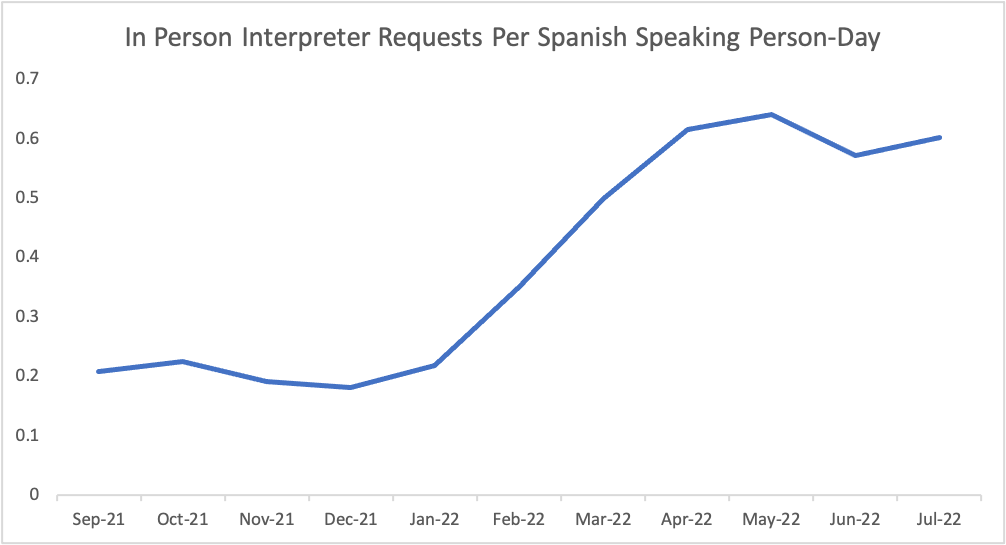Neonatal Quality Improvement
Neonatal Quality Improvement 7
222 - Increasing Medical Interpreter Utilization in the NICU Through a Multifaceted Intervention Bundle
Publication Number: 222.441

John Feister, MD (he/him/his)
Fellow
Stanford University
Palo Alto, California, United States- MP
Presenting Author(s)
Co-Author(s)
Background:
Language barriers are increasingly recognized as influencing medical care and health outcomes. Use of medical interpreters, particularly in person, improves communication between medical teams and families and may lead to improved health outcomes.
Objective: Our study sought to assess the impact of a bundle of language access interventions on Spanish in person interpreter utilization in a level IV NICU at a quaternary children’s hospital with a large Spanish speaking population.
Design/Methods: A quality improvement framework was employed. Baseline utilization of medical interpreters was determined via analysis of in person and tablet interpreter requests. Barriers to interpreter utilization were identified via discussions amongst a multi-disciplinary team. Interventions were designed to address barriers to interpreter utilization, including staff educational sessions focused on interpretation guidelines/processes, enhancing awareness of the Spanish speaking patient census during daily rounds, distribution of interpreter request cards to families, and designation of a dedicated NICU Spanish interpreter during day and night rounds. Interventions began in January 2022 and are ongoing.
Results:
Roughly 30% of the NICU population had a preferred language other than English, with Spanish being the most preferred. Initial rates of in person interpreter utilization were 0.2 interpreter requests for every day that an infant of a Spanish speaking family was in the NICU. Rates of in person interpreter requests tripled within six months of a graduated implementation of a language bundle (figure 1). Utilization of video tablet interpreters doubled during this time period as well (figure 2). Multi-disciplinary educational sessions regarding guidelines for interpreter utilization and processes for requesting interpreters appeared to have an immediate impact on interpreter utilization.
Conclusion(s):
Deployment of a language access focused bundle of interventions increased utilization of both in person and video tablet Spanish interpreters in a NICU with a large Spanish speaking population. Low cost interventions such as staff education had significant impact on interpreter utilization. Future research should focus on the impact of increased interpreter utilization on NICU infant health outcomes.
